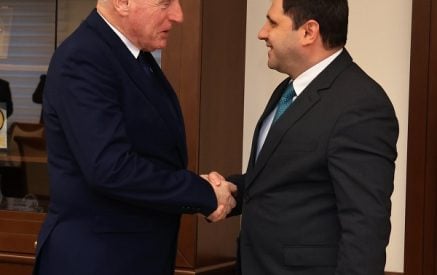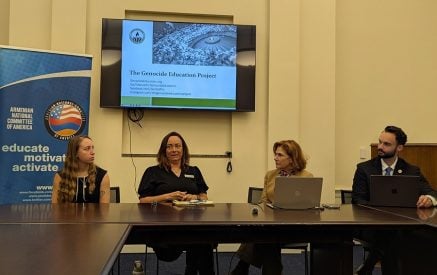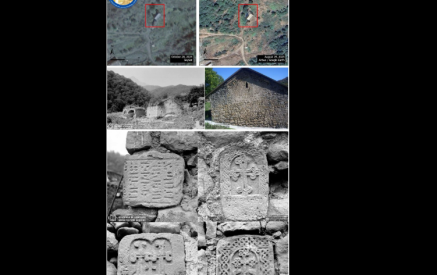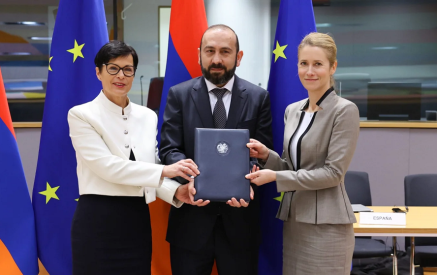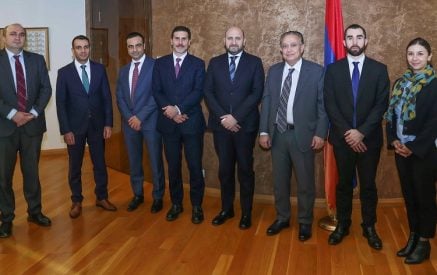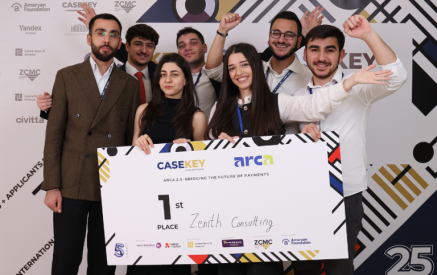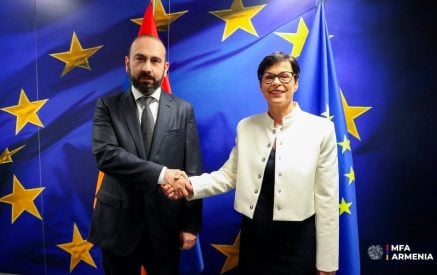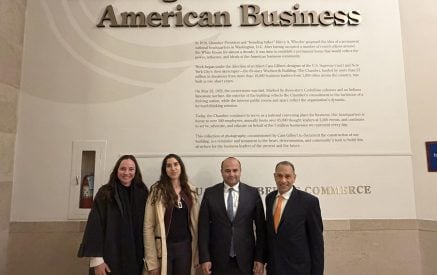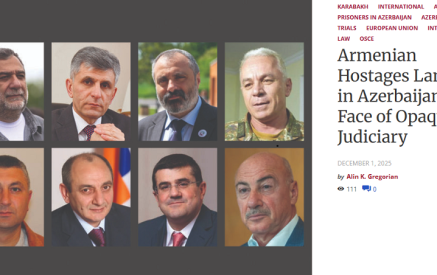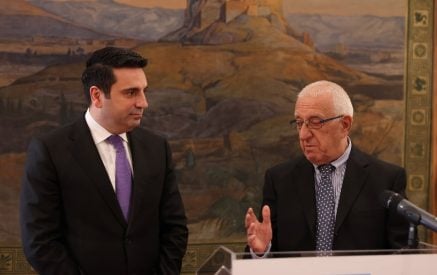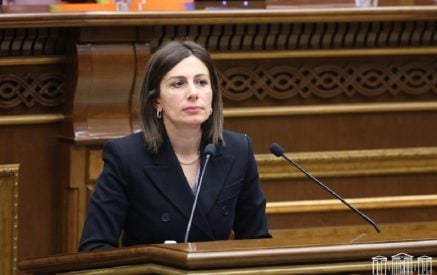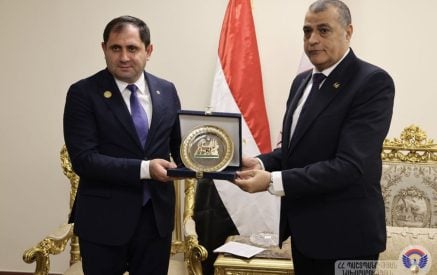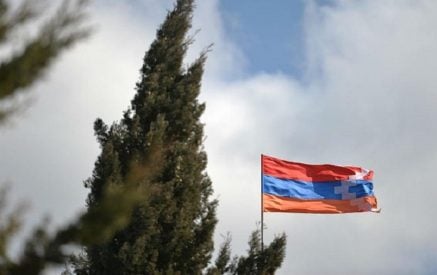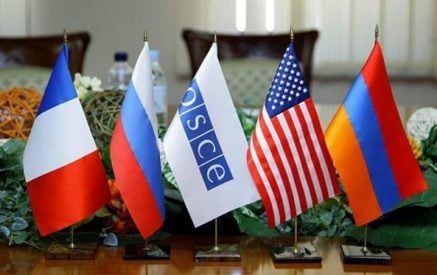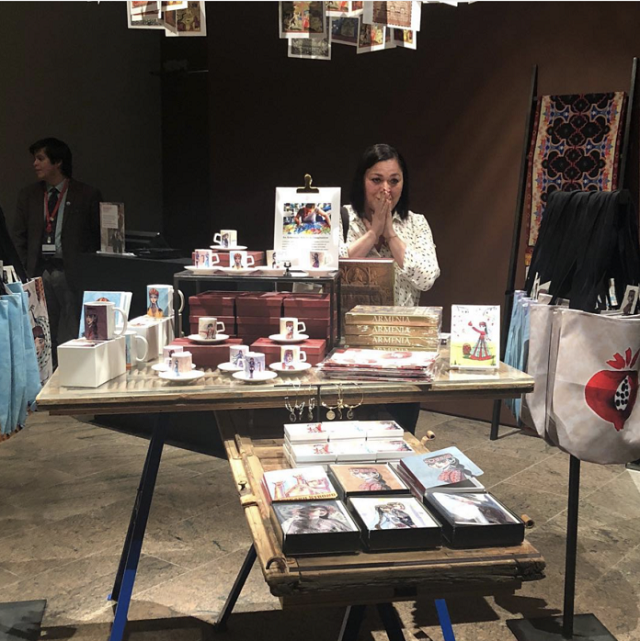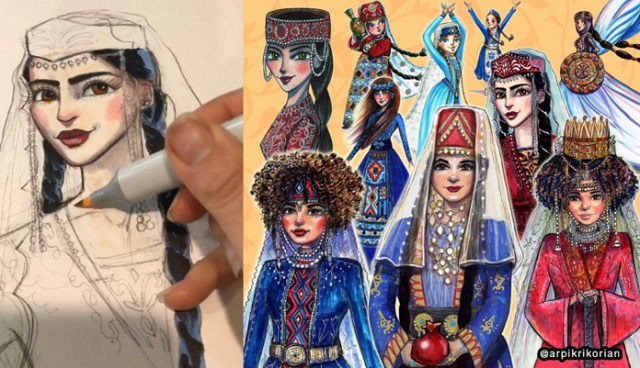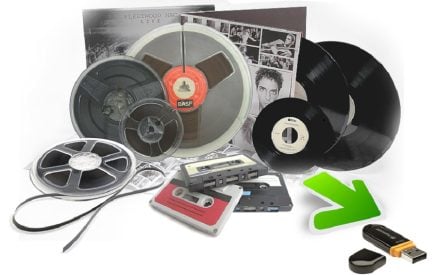Arpi and her family emigrated from Beirut, Lebanon to Southern California in 1978 to flee the Lebanese Civil War. Her artistic journey began at Mesrobian Armenian School when her art teacher, Ms. Wagner, encouraged Arpi to apply for the ArtCenter College of Design’s high school program. After completing the program, she became certain that art was her calling, but when she explained to her father that she intended to study illustration and become a full-time artist, he was not convinced. He had the staunch belief that Arpi could only help the Armenian people by becoming a lawyer or doctor. Nevertheless, committed to her dream, she applied and was accepted to the same ArtCenter College of Design in Pasadena, Calif., on the university level.
After earning her BA in Illustration there, Arpi worked as a staff artist for “The Angry Beavers,” a Nickelodeon animated series from 1995-2000. She also worked on notable shows like “SpongeBob SquarePants,” “CatDog,” “Dora the Explorer,” “Oswald the Octopus,” and “Hey Arnold!”. As “The Angry Beavers” series came to an end, her family was growing, and her father, a realtor of 40 years, was diagnosed with cancer.
Compelled to take over her father’s business, Arpi stepped away from illustration to earn her real estate license and worked as a realtor for the next ten years. Arpi shared, “I actually loved being a realtor. I met a lot of great people and learned a lot about business, but it got to a point where I really needed to get back to my art.”
Fortuitously, in 2008, her daughter’s school, Sahag-Mesrob Armenian Christian School in Altadena, Calif., was looking for a new art teacher. What was only supposed to be a few weeks of teaching turned into three years because Arpi enjoyed working with the students so greatly.
“That role got me really excited about creating art for myself again. So I started drawing for myself and then I posted a drawing I did of an Armenian dancer on Facebook. It was funny because people who had met me in the previous ten years didn’t know that I was an artist. They just knew me as a realtor. After I posted the drawing, people were asking me where can I get that and who made this, because at the time I posted it, I didn’t even say it was my own work,” Arpi explained.
Arpi was first inspired to draw her famous Armenian dancers when she couldn’t find joyful Armenian cultural decorations or art work with which to decorate her daughters’ bedrooms. After receiving an overwhelmingly positive response from her Facebook connections, she began ordering canvas prints and custom mugs featuring her illustrations of Armenian dancers. As the demand for more of her joyful Armenian products grew, Arpi began mass producing everyday items such as stationery, kitchenware and clothing adorned with her artwork from December 2013. Today, her products are sold in a total of ten stores throughout Los Angeles and New York, and via her e-commerce website.
Arpi effusively exclaimed: “If you ask me, who are you, my first answer before I even say my name would be I’m Armenian. I’m so in love with our Armenian dances – the hand movements, and the gestures. I love the fact that everything we do as Armenians, even the names that we have, all have meaning behind them.”
With a focus on cultural art and heritage preservation, Arpi employs a modern illustrative style that takes traditional costuming and patterns from the Armenian heritage and presents it with a modern twist.
Arpi detailed her creative process, “My characters are original products of my own imagination. I always start in my sketchbook with a pencil drawing of the character, then scan the sketch into Photoshop to clean things up and refine the drawing. I then print out the black and white pencil drawing onto mixed-media paper and I actually hand-color the character with markers. People are always shocked to hear that I draw the characters with markers. They often think I either paint them or create them digitally. As for the backgrounds, I search for repeating patterns on different cultural relics like khachkars [stone crosses], the cloth lining of the books of the Madenataran [The Armenian Institute of Ancient Manuscripts in Yerevan], Armenian doors, tapestries, tilework, embroidery, and needlework. I then create my own patterns for the backgrounds using those existing patterns as my inspiration.”
Creating the backgrounds is a process similar to creating the characters, except the backgrounds are colored digitally rather than with markers. By keeping the background and character as separate layers in Photoshop, she can adjust the illustration to be used for various products.
When a friend suggested that Arpi should name each of her dancers, she knew they had to be given authentic Armenian names.
“My father, who passed away two years ago, felt it was extremely important to pass down Armenian names to future generations. If any of my friends had babies and they didn’t give them Armenian names, my dad would scold and lecture them about the importance of passing traditional names down. That was one of the reasons I developed the page of Armenian name suggestions on my website. It was about eight months to a year of research of looking at different books and websites and going through the dictionary to find words that would make for a nice Armenian name.” Arpi explained.
Perhaps there is no greater testament to Arpi’s impact on culture and art than the New York City Metropolitan Museum of Art featuring her products at Armenia!, an exhibition from 2018-2019. Her products completely sold out so she had to restock. It was said to be one of the best-selling special exhibit stores that they have had to date. Arpi gushed about the achievement: “It was one of the best things I think has ever happened to me. I felt very, very proud.”
On several occasions throughout 2019, Arpi held successful pop-up shops at the department store Nordstrom. She shared with me a touching Armenian-language conversation she had with a young customer during one such occasion.
“I was selling my Armenian products at Nordstrom in Glendale when a family came in with their daughter who was about four years old. She looked at one of my backpacks then grabbed it and hugged it. She came up to me and said, ‘Asi yes em!’ [This is me!] And I went, ‘Do you think it looks like you?’ She said, ‘No, she doesn’t look like me – she is me!’ She asked, ‘How did you do it?’ I responded, ‘I drew it’ and she replied, ‘You drew me?’”
This little girl, who participated in Armenia folk dances, could not understand how the dancer on the backpack could look like her, and showed it in disbelief to her mother, again exclaiming, “Look, she drew me. It’s me, it’s me!” Arpi said, “It made me cry to think this little girl was walking around the store not expecting anything to relate to her, and here she is seeing someone who looks just like her, at Nordstrom! It was an incredible experience. That’s why I do this. That’s what brings me happiness.”
Arpi frequently receives photos and touching messages from Armenians in different countries, ranging all the way from the Netherlands to Brazil who have purchased her products.
Arpi said, “I don’t want to be known as a retailer. I’m an Armenian artist who makes Armenian art and culture accessible. For $18 you can have a mug that reminds you of being Armenian each time you use it. The fact that my art is out there and is reaching Armenians all over the world and bringing them happiness and connecting Armenians to the homeland is what inspires me and gets me going.”
Arpi contributes to the Armenian community and diaspora not only through her art work, but through her philanthropy. Prior to the war in Artsakh, Arpi sent $15,000 worth of her school supplies including backpacks, lunch boxes, pencil cases, journals, and tote bags to 200 students and school staff at Armenian Relief Society-sponsored schools in Artsakh. Since the explosion at the port of Beirut, Lebanon in August 2020, she has also donated a portion of her profits to the Armenian Relief Society (ARS) of Lebanon. Additionally, Arpi has donated over $28,000 to her husband, Joseph Krikorian’s non-profit organization, Code 3 Angels through the sales of her “Artsakh Strong” t-shirt. This allowed the organization to purchase and distribute medical equipment and basic necessities like clothing and food directly to the displaced families of Artsakh.
Arpi is currently working on several new projects. One of these is a dream over 30 years in the making. Arpi is submitting three children’s books to publishers, two of which are Armenian-themed and written in English.
She explained: “I want to be able to share our culture with non-Armenians. I want them to know that we’re not just the victims of the genocide. There is so much more to us. We are survivors, we are strong people, we are deeply rooted in culture, and we love poetry and art. It’s empowering for everyone to learn about different languages, cultures, and ethnicities.”
In addition to working on several children’s books, Arpi has been developing “Sosse and the Daredevils of Sassoun,” an Armenian-themed feature animation in collaboration with Twiddle Productions Inc. The animation, based on the epic legend of David of Sassoun, follows the daring adventures of Sosse, a young Armenian girl who through her heroic journey eventually joins David and the daredevils in a historic battle to free Armenia and her people from invaders. You can watch the trailer for “Sosse and the Daredevils of Sassoun” here.
One of Arpi’s greatest goals is to create a non-profit organization that funds creative writing and arts education for Armenian youth to ensure the perpetuation of the Armenian language and continued revival of Armenian art and literature.
Arpi has a message for fellow artists and creatives: “My advice is, don’t create things because you think they’re going to sell. Create for the sake of your own enjoyment. Create what you love and what you want to see. Soon enough, you will find your audience because you’re never alone in how you feel, never. Also, don’t keep yourself a secret. By putting yourself out there, you could be inspiring someone else to do the same and the more people we have putting their art out there, the happier people we have in the world, and the happier world we’ll have.”
Main Caption: Arpi Krikorian at the Metropolitan Museum of Art (MET), 2018 (Photo from @arpikrikorian



















